Today’s consumers spend a lot of time in conversational channels and it’s opened up new opportunities for companies to get closer to their customers at every stage of the customer lifecycle, from marketing campaigns to pre-sales support, to post-purchase care.
It’s a win-win for both sides. Brands can reduce spending on operations while optimizing customer engagement activities, and consumers enjoy enhanced shopping experiences with less friction. What’s not to love about having your favorite brand on hand with a few clicks?
Marketers especially, ever the innovators, are jumping on these conversational channels as a new way to engage customers and prospects. But every business’ journey to modernize their marketing inevitably leads to the same question: between WhatsApp, SMS, and email, which is the best channel to use for marketing?
To answer this question, we break down the latest data and present advantages and disadvantages of using a few of the top customer engagement channels for marketing.
Email marketing
Contrary to countless headlines predicting the death of email every year, people are as active as ever in this channel, but there are different preferences and behaviors audience cohorts.
If we look at the numbers by generation, we get a bit more insight: 74% of the so-called Baby Boomers – born between 1946 and 1964 – believe that email is the best channel to receive information from brands, followed by 72% of Generation X, 64% of Millennials, and 60% of Zoomers.
Therefore, it’s critical that businesses know the age demographics of their customers, as this directly influences which channels they should prioritize.
Email statistics
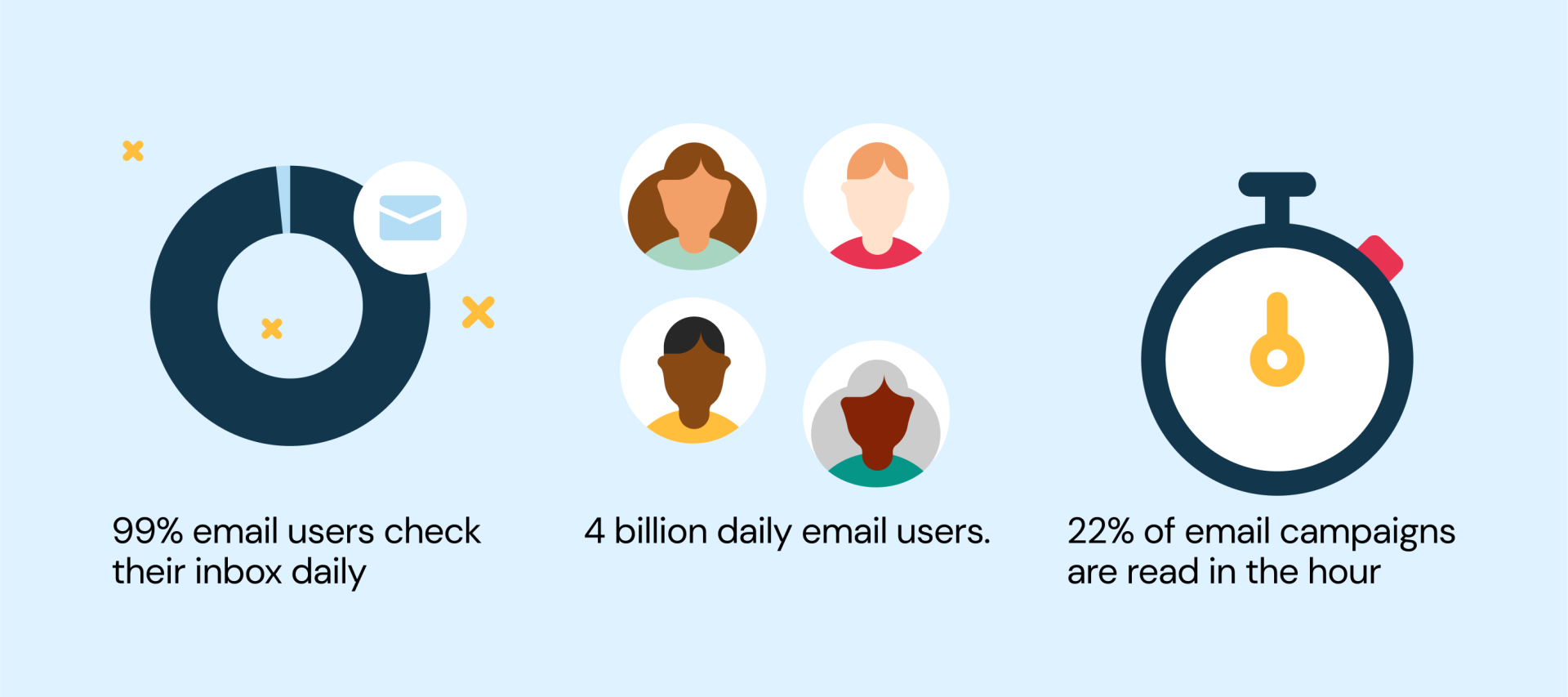
Sources: Statista, Optinmonster, GetResponse
And there's more interesting email stats:
8 out of 10 people open a welcome email from a brand. Generating 4 x more opens and 10x more clicks than other types of emails.
Open and click rates are typically higher when brands send less than 5 newsletters per week.
Across all industries and across the world, the average email click-rate is 1.3%, and the bounce rate is 10.1%.
Additionally, it’s worth mentioning the importance of ensuring your customer journeys are optimized for mobile users. A survey conducted by BlueCore pointed out that 59% of Millennials mainly check emails using their smartphones; this number is even higher for Zoomers of which 2 in 3 (67%) access email via mobile.
Around 73% of businesses are optimizing their emails for mobile devices so if you’re in the 27%, it’s time to get a move on!
SMS marketing
One of the biggest advantages of SMS is its huge global reach. Add to that the ability to send messages without the internet and you’ve got a channel that lets you connect with customers in places around the world where mobile data isn’t always available or free for the consumer.
SMS statistics
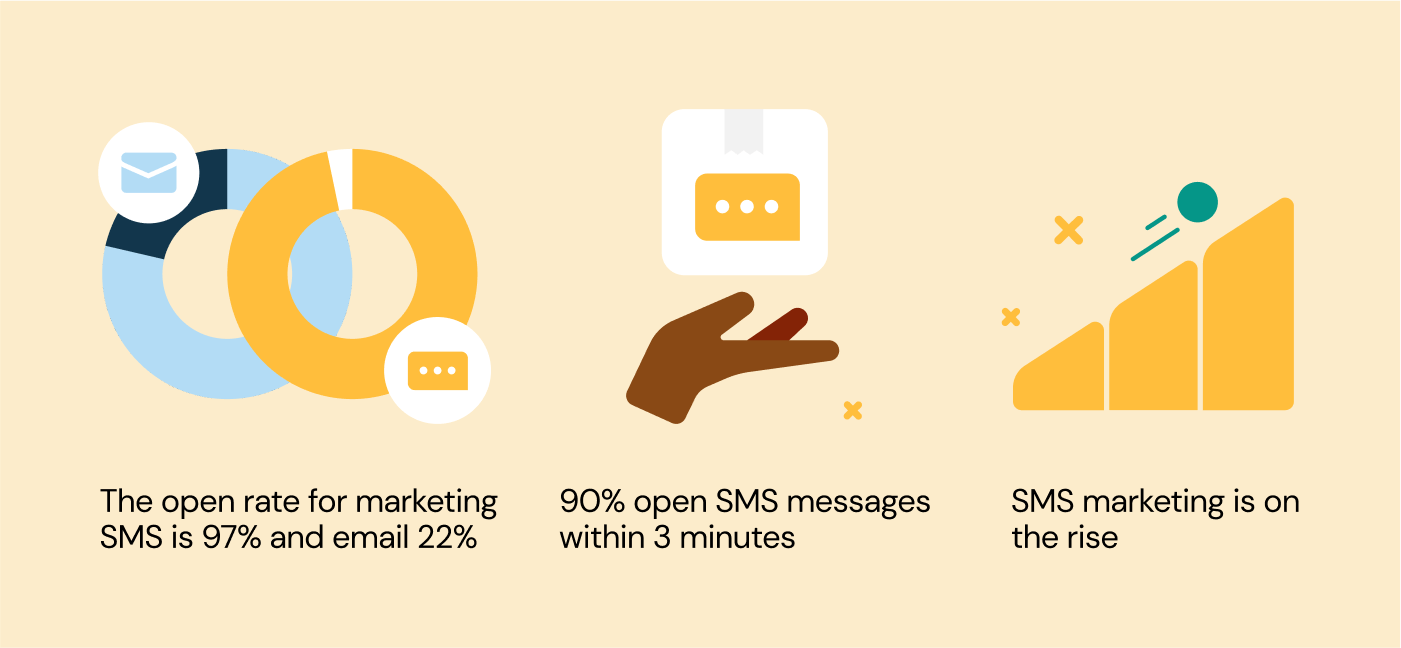
Sources: ConnectMogul, Sinch
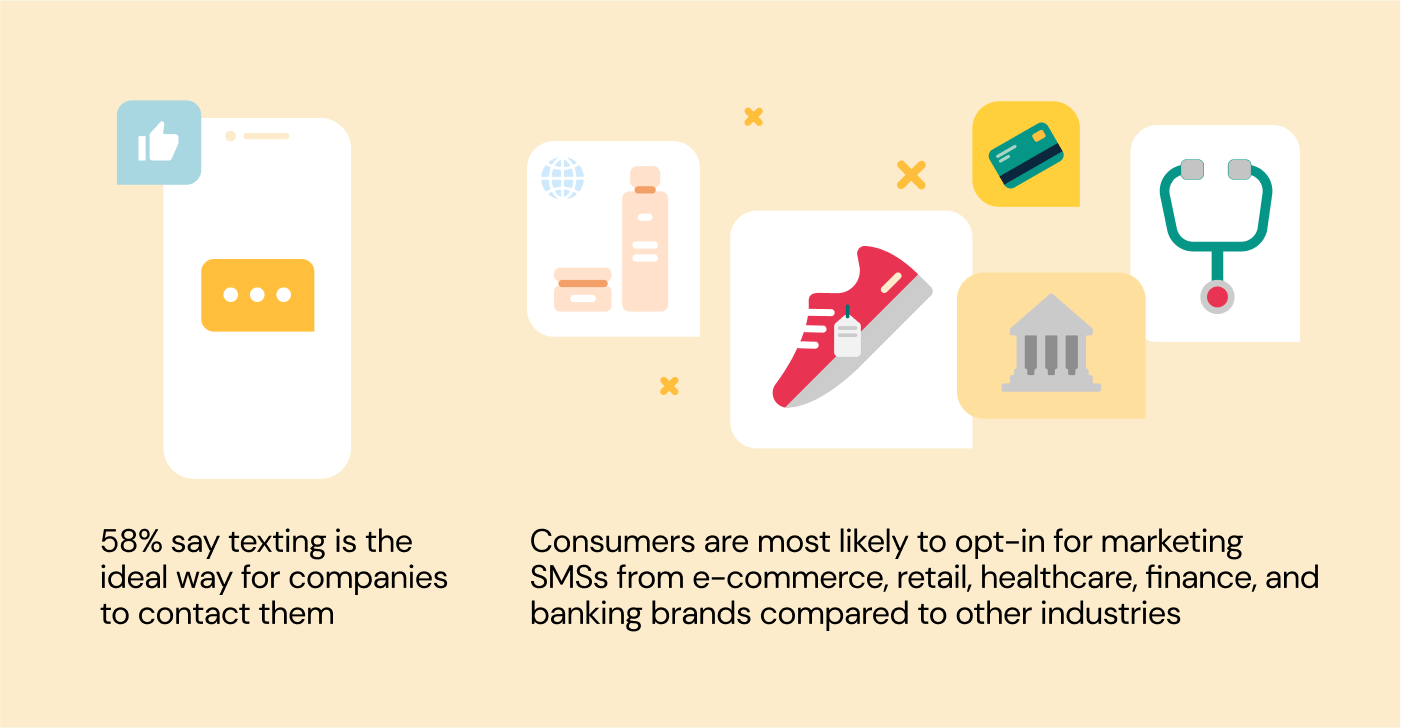
Sources: ZipWhip, SimpleTexting, Sinch
From the info above, it’s clear that when it comes to open rate, clicks, and even the ease of talking directly to customers, SMS is a great channel for breaking through the noise to increase customer engagement and revenue.
WhatsApp marketing
One of the newest customer engagement channels, WhatsApp, has three different versions:
-
The app used by over 2 billion people worldwide
-
The Business App aimed at small companies
-
The Business API with features to serve large businesses and build WhatsApp capabilities into their own software.
A huge advantage of WhatsApp is that it supports all types of rich media such as images, videos, and gifs. In WhatsApp, it’s easier than ever for businesses to engage customers with eye-catching, interactive content.
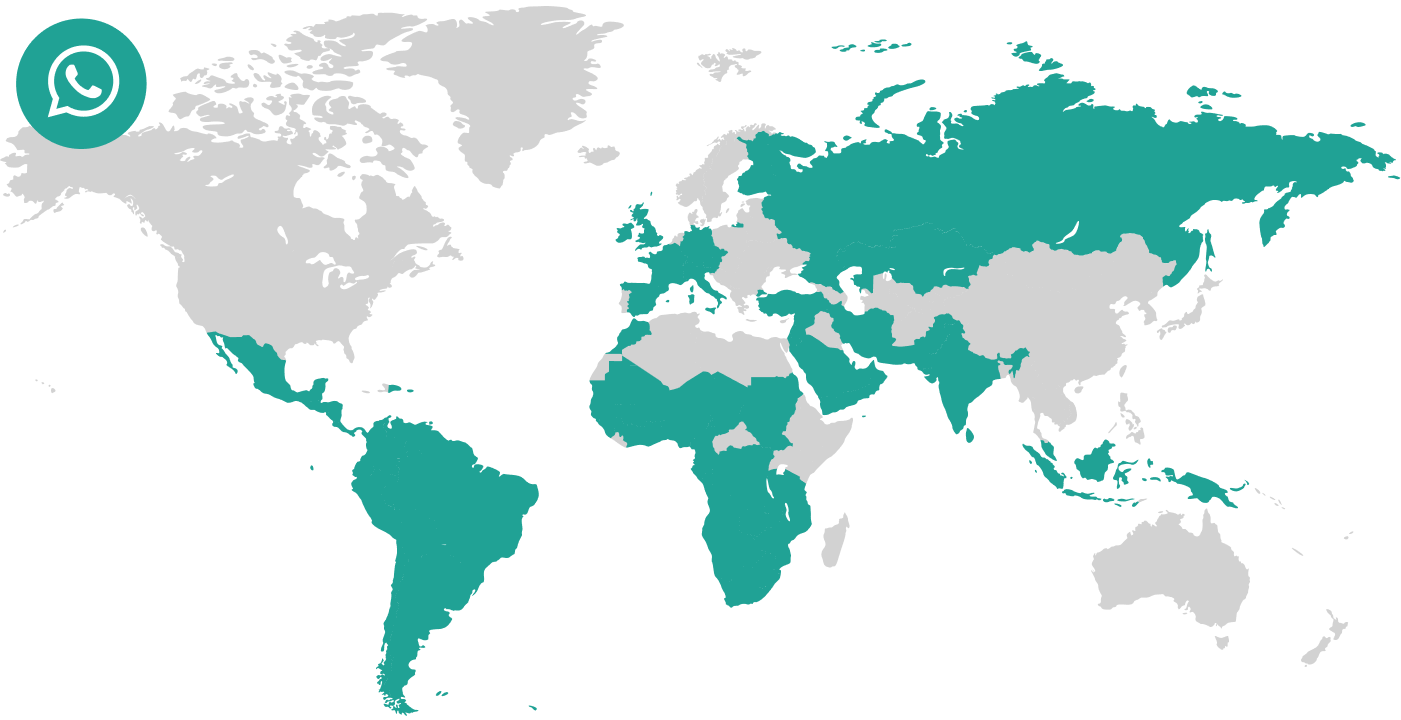
WhatsApp is the most used messaging app in the world with over 2 billion users. And, as you can see in the map above, for many countries around the world it is the number one messaging app!
WhatsApp statistics
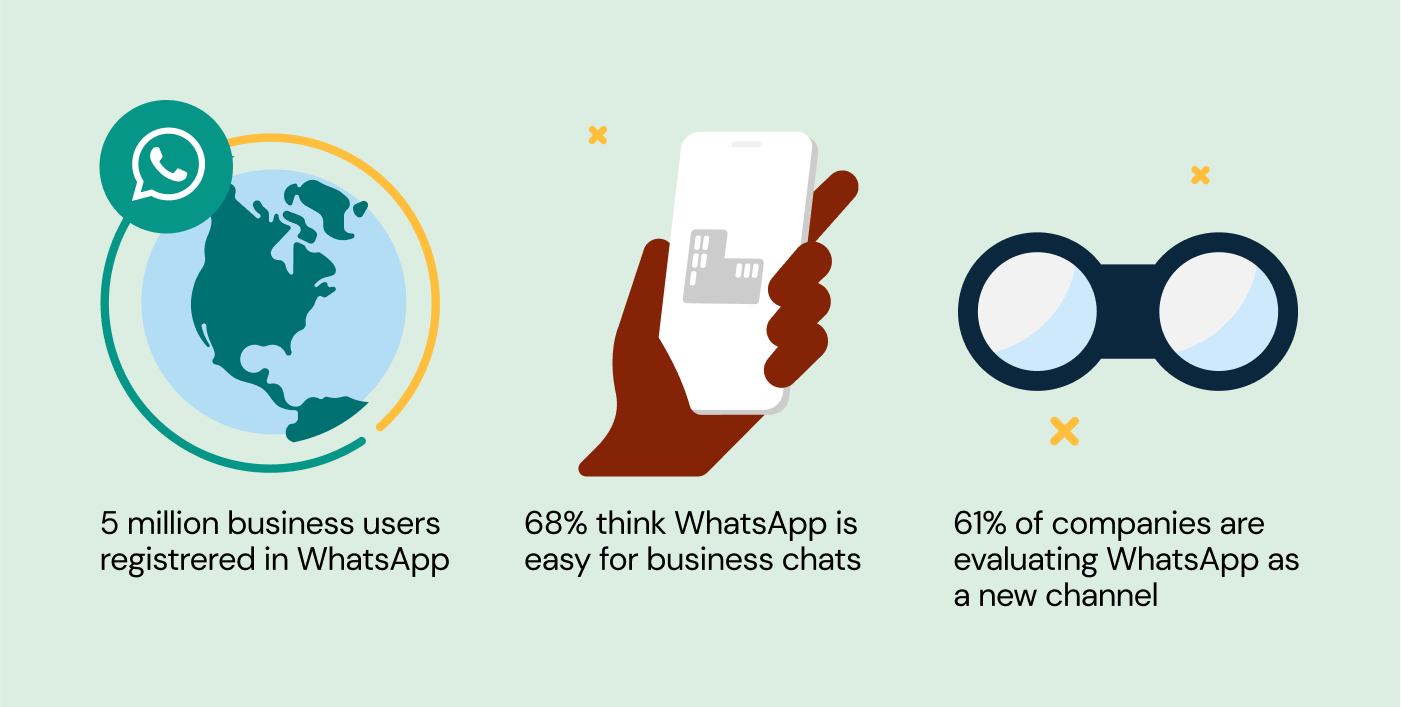
Source: Meta
The statistics on WhatsApp reveal big opportunities for marketers and, out of the three channels listed here, it’s the one that brings businesses and consumers closest since it’s designed specifically for 1-to-1 conversations. What’s more, adoption of this engagement channel continues to grow in places like Indonesia, the United States, South America, and parts of Europe.
So, should you be marketing to customers using email, SMS, or WhatsApp?
The answer is, as you probably guessed, it depends on your business goals and the audiences you want to reach. That means you’ll want to really get to know your customers to figure out which channels will work best for your company and its objectives.
Most businesses choose a combination of these channels to ensure full coverage of their target base and to get the maximum benefit from all these channels. For example, a company might use email for newsletters, SMS for urgent notifications, and WhatsApp for promotions.
How can Sinch help?
Once you’ve decided on your channel strategy, it’s time to lean on someone who knows how to get you started fast. Sinch is the industry leader in conversational messaging and customer engagement solutions, with expertise in email, SMS, WhatsApp, and even more customer communication channels!
If you’re ready to build stronger customer relationships, drive more revenue, and create new customer experiences through conversations, learn more with our ultimate guide to conversational messaging channels.



